[ soundtrack : Vladimir Vysotsky - "Horses" ]
***
Some people are preoccupied with the term ‘handmade’, often in conjunction with ‘hand tools’ and ‘artisanal’. My regular readers will not be surprised to learn that I’m not one of them. It strikes me as an immature and fairly useless distinction, and reminds me of my first years at trade school when (before Reform ‘94) we were supposed to choose between becoming ‘bench-workers’ or ‘machine-workers’ — a silly distinction obviously made by bureaucrats, if you ask me.
We were about 50/50 boys and girls in the common first year. In my class, I will swear that all the boys were secretly in love with Synne; she had beautiful, brown eyes; curly, auburn hair and within her lived such a contagious joie de vivre I have never met since and will never forget.
The girls usually chose bench-work, generally ending up doing furniture restoration or unprofitable drudgery for a few years before they lost interest and copped out on some medical diagnosis (the Norwegian welfare state can be quite benevolent if you belong to one of the approved client groups), or they switched to a more academic education and career. I still remember their myopic focus on dovetailing — through, half-blind and blind — which for them seemed to represent the essence of woodworking. That, and French polishing. All rather far from the economic realities of the trade, but what a nice hobby!
Most of the boys chose ‘machine-work’ and the productive and economic benefits that entailed (and right there you have a concrete explanation of the statistically contrived ‘pay gap’), but a fair proportion of them duly drifted over to the Dark Side (carpentry) or found greener and less dusty pastures elsewhere. Only the foolish and hardy — the foolhardy — persevere in this trade …
I imagine noticing that many people are not primarily interested in making stuff, but rather in using woodworking as a way to distinguish themselves socially — strange as that may sound. You’ve probably met a wine snob, a gourmet or a jazz fanatic, a Hi-Fi freak or a cigar connoisseur … These people are primarily interested in showcasing a passion in order to stand out from the crowd; in order to present a distinction that makes a difference. It’s all very human, but still I resent it.
Our online woodworking world is of course not without similar variants; they come in a wide variety (in no special order): the honing wanker who’s forever slicing paper; the hand-tool-only purist who keeps himself above the common dust and noise; the spoon-carving stylite deafened by the incessant din of one hand clapping; the antique plane collector and his obsession with cataloguing a small subset of reality; the prestigious designer-maker — the woodworking version of the singer-songwriter; the Japanese-tools-only aficionado and his delicious satisfaction of knowing all the foreign nomenclature; the American cult-of-personality Woodworking Guru and the instant-TV-presenter influencer … you get my drift.
I sketch these caricatures for you snarkily tongue in cheek, but truth be told; I’ve learned something useful from each and every one of these groups I’ve teasingly listed. And what’s more; I suspect I’m just as easily made fun of myself. Feel free to take the piss in the comments!
As for the distinction between handmade and machine-made … it’s mostly nonsensical.
So … you’ve made a wooden artefact using muscle-powered hand-tools only. Good for you (I mean it!) … but were the hand-tools you used made using only muscle-powered machinery? Did you have the aid of electric lighting or did you work by candlelight? Were all the involved materials extracted, transported and refined using manual labour, horse-drawn wagons and sailing ships? I could go on, but I think you get my drift: It’s all right ripping and planing by hand if all you’re making is a little box once in a blue moon. Your ‘handmade’ product is a limited fantasy you for some reason feel the need to comfort or pride yourself with, and is more of a conceit than a realistic description of what’s going on. The woodworking trade suffers when the hobbyists and enthusiasts by weight of numbers get to define what woodworking is. It skews both understanding and reality in an unrealistic and unhealthy way, much like most online phenomena. I don’t like that either.
I know, I know … our modern world is disconcertingly disenchanted, debauched and vile, but deluding yourself with fairy tales will do nothing to improve the situation. Being brutally honest just might.
The way I see it, all material production exists on a continuum between ‘industrial’ on the one hand, and ‘artisanal’ on the other.
The essence of industrial production rests on the standardization of measure. All parts must must be within certain, pre-defined tolerances. This enables the serial machining of identical parts and the enormous gains in efficiency and economy that our modern societies rest on. This basic insight seems to be forgotten curiously often. Our modern, material world is not built on a laptop in Starbucks, but in factories in Asia, by very clever and crafty people who have the skills and the grit most of us have become too decadent for.
At the other end of the scale we find the sort of artisanal production I and I’m guessing most of my readers engage in. Spooncarving would be the ultimate in artisanal production; strictly hand tools and every cut freehand and muscle powered.
The kind of bespoke, small-scale manufacturing I tend to do borrows more than a few basic principles from industrial production: using a stopper-block and a chop saw for repeated cuts in order to eliminate measuring and marking each part, for instance, or all manner of workshop jigs and fixtures to aid the execution of common, oft-repeated procedures — to aid accuracy and efficiency, and hopefully to save some time and make some money.
I might divide my tools into categories like hand tools, handheld power tools and machines, but it would not be a useful distinction for me. They’re all just tools, and I’ll use the one best suited to get the job done, whatever ‘best’ might entail in each case.
More important to me is the quality of the work done by me and my tools. My attitude is pragmatic; I’m interested in the results and the time it took to achieve them — because it’s proportional to the price I’ll have to charge the customer.
Although I use machines as much as possible — and I derive great pleasure from using machines well and seeing them do nice work — there are still many operations that need hand-work. I enjoy that too. I simply like taking tools to wood — I’m not that fussed about what kind of tools as long as they’re working well and I’m making something good :-)
I’d still say my stuff is ‘hand made’ if anyone were to ask. Luckily, they don’t.
***




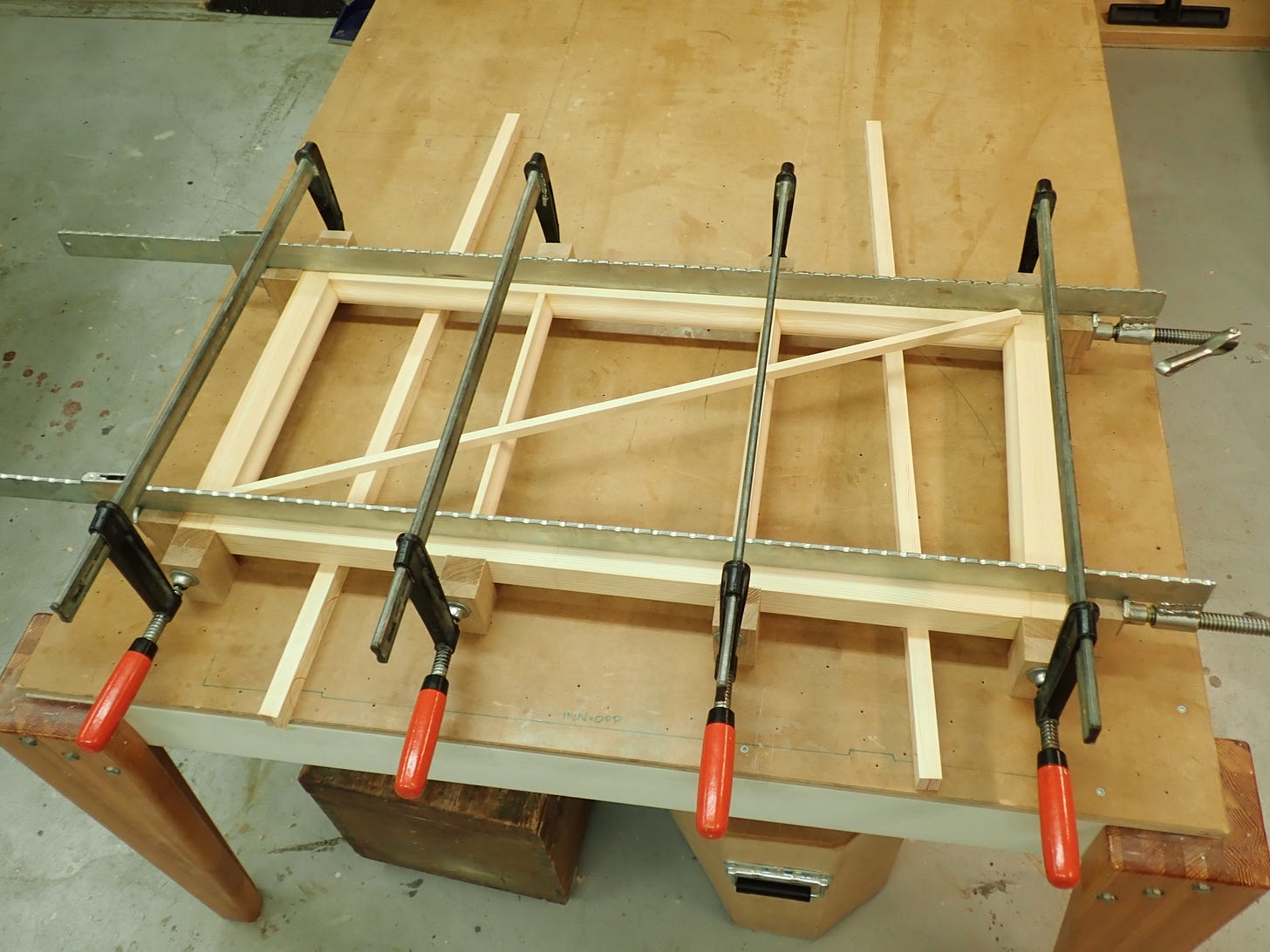
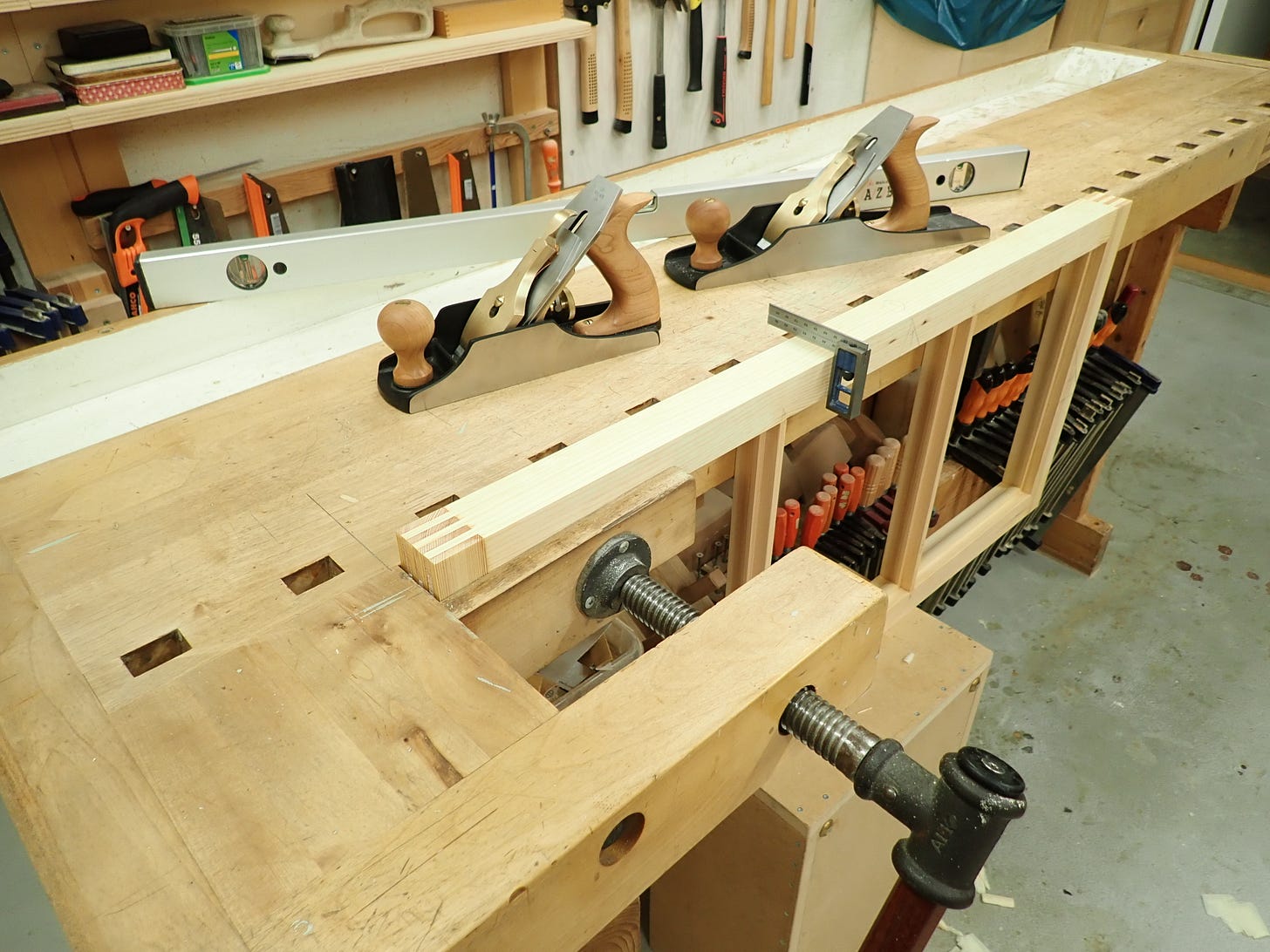
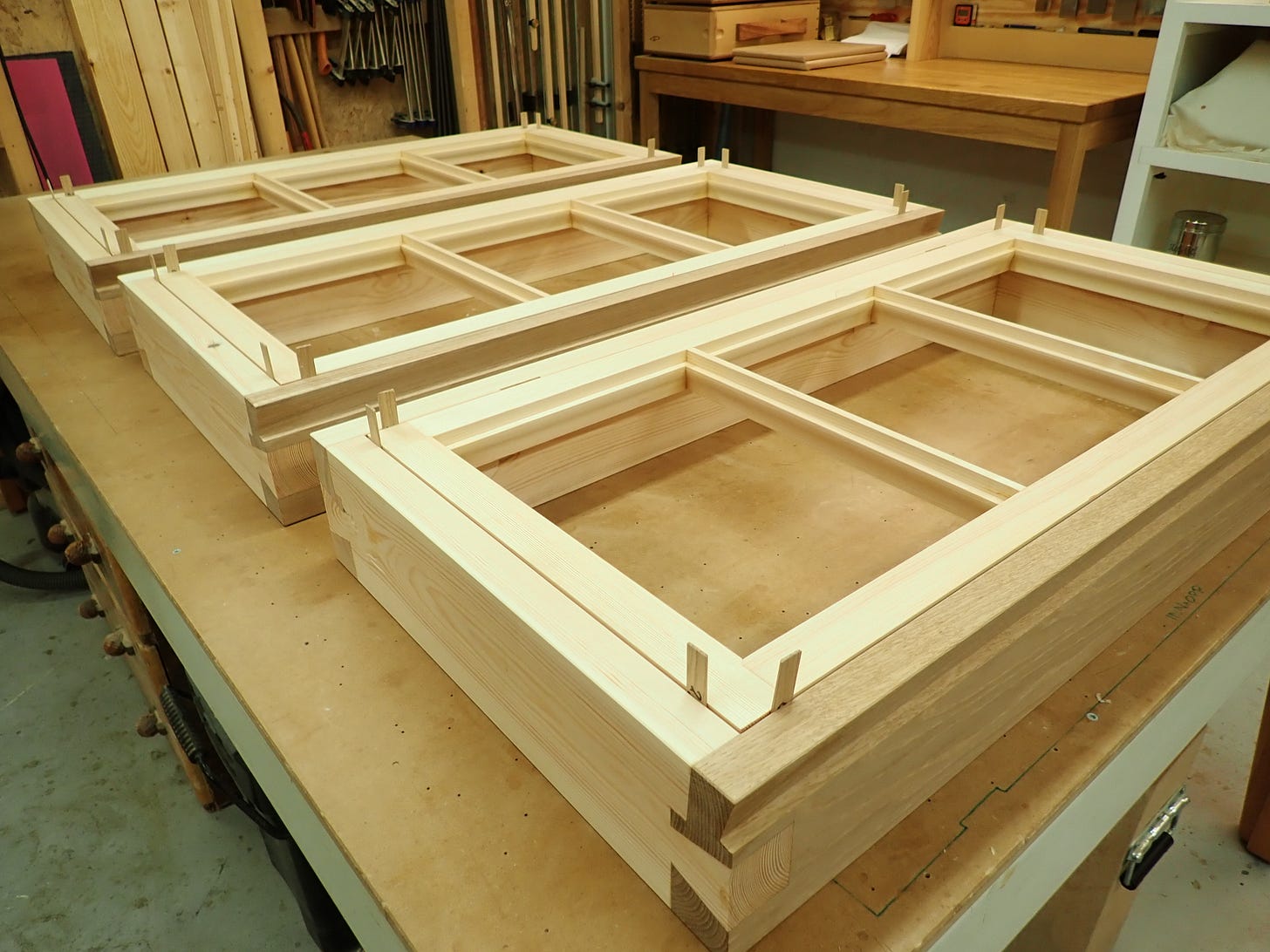
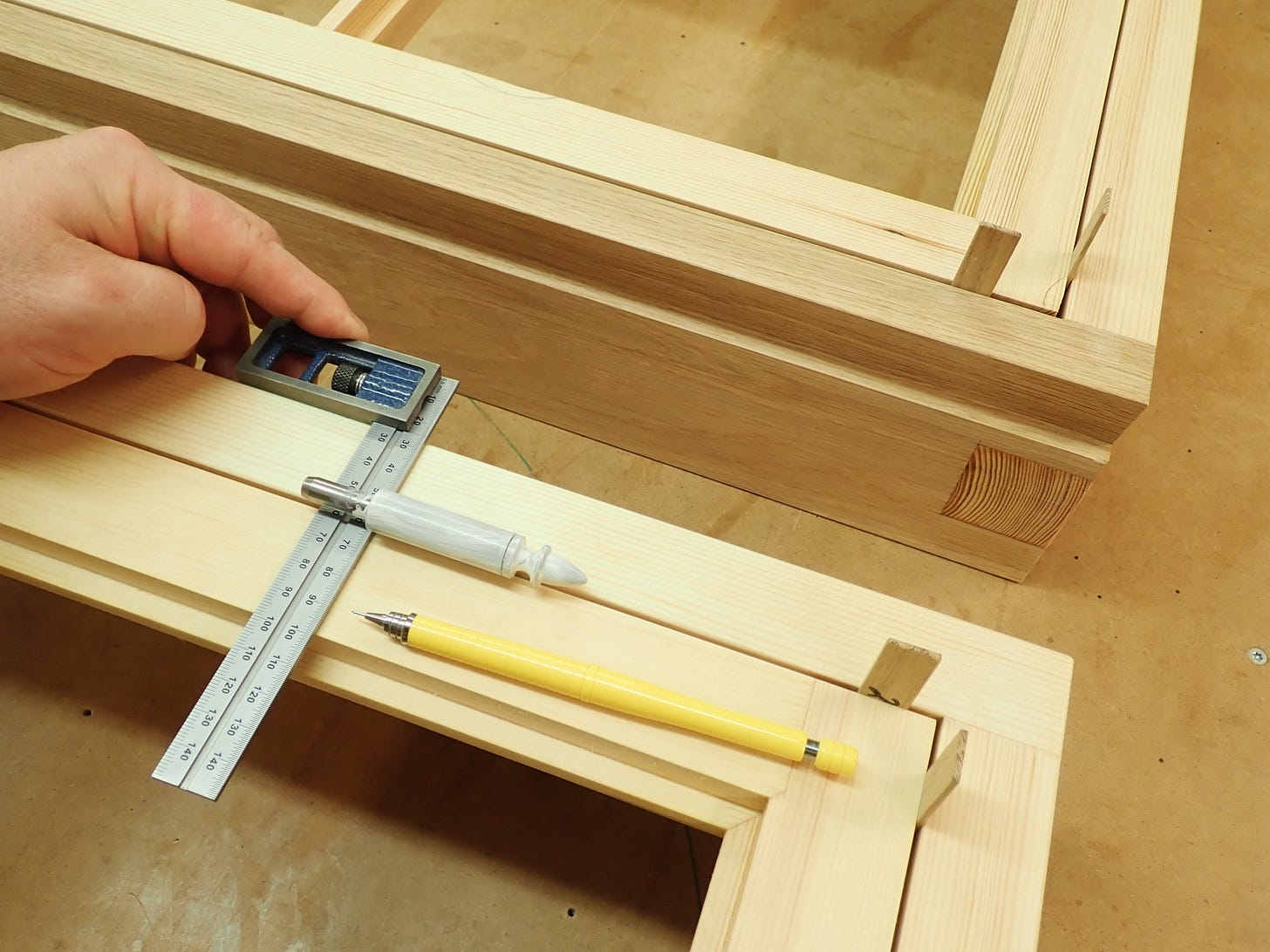
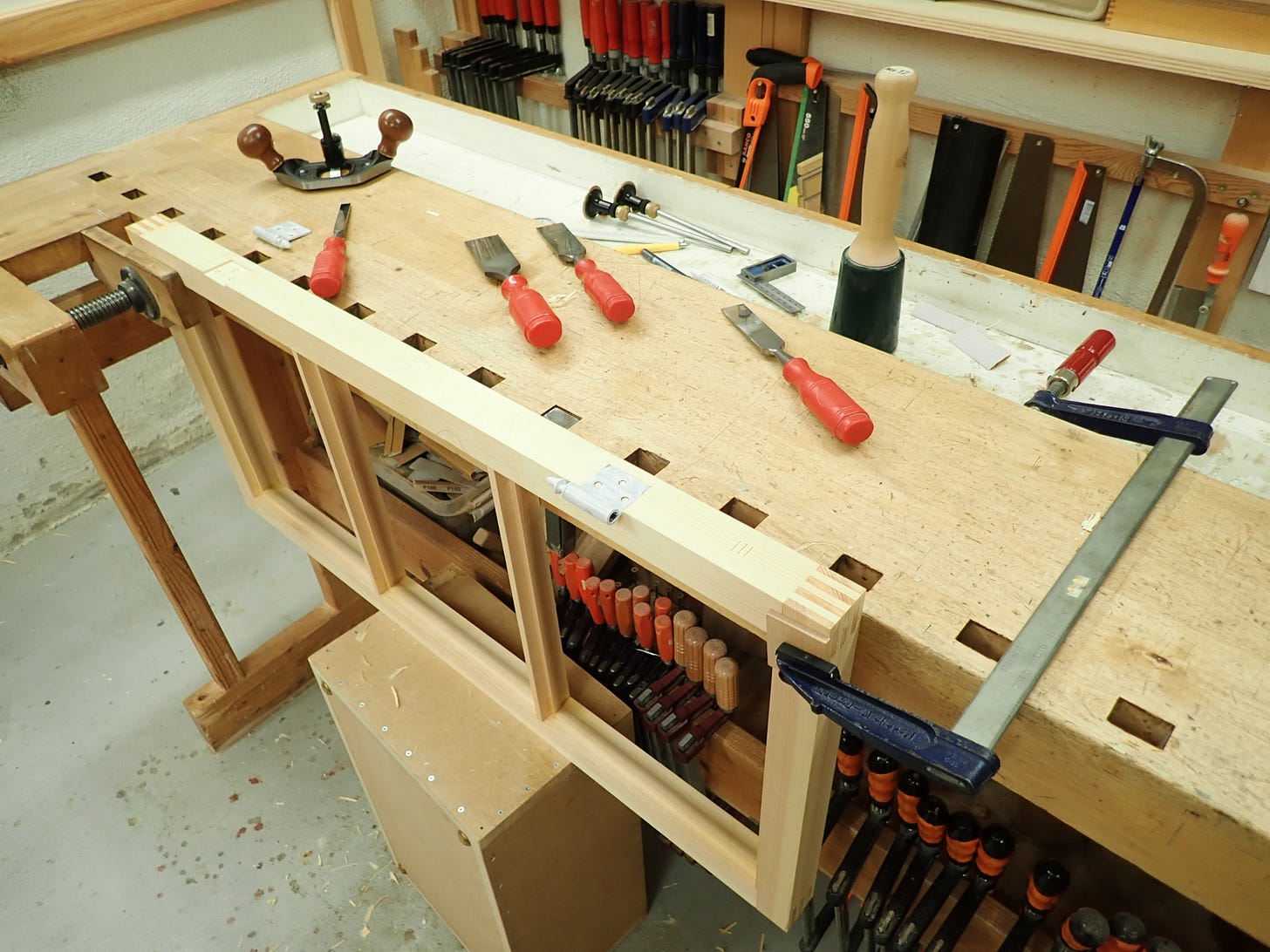
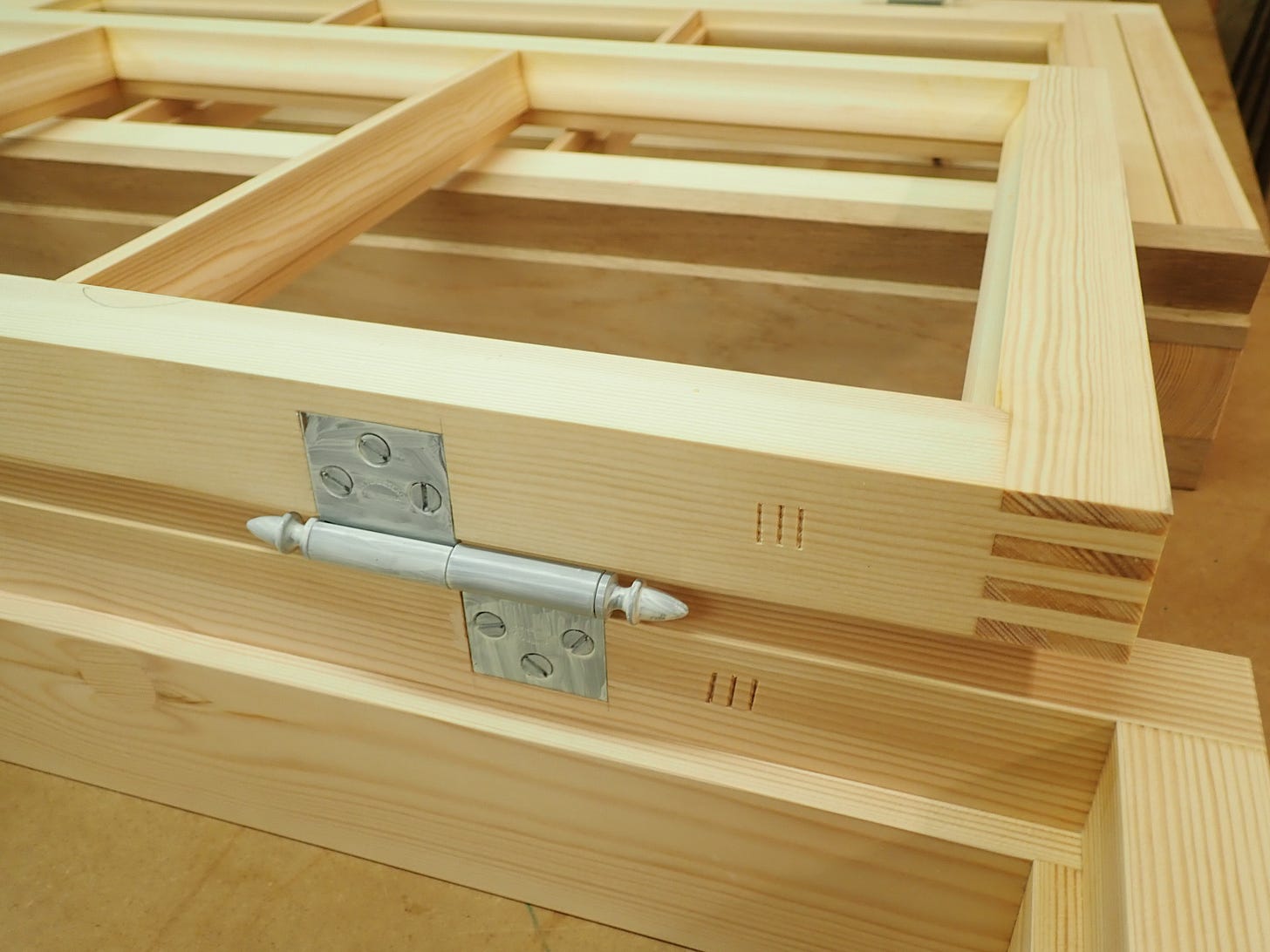
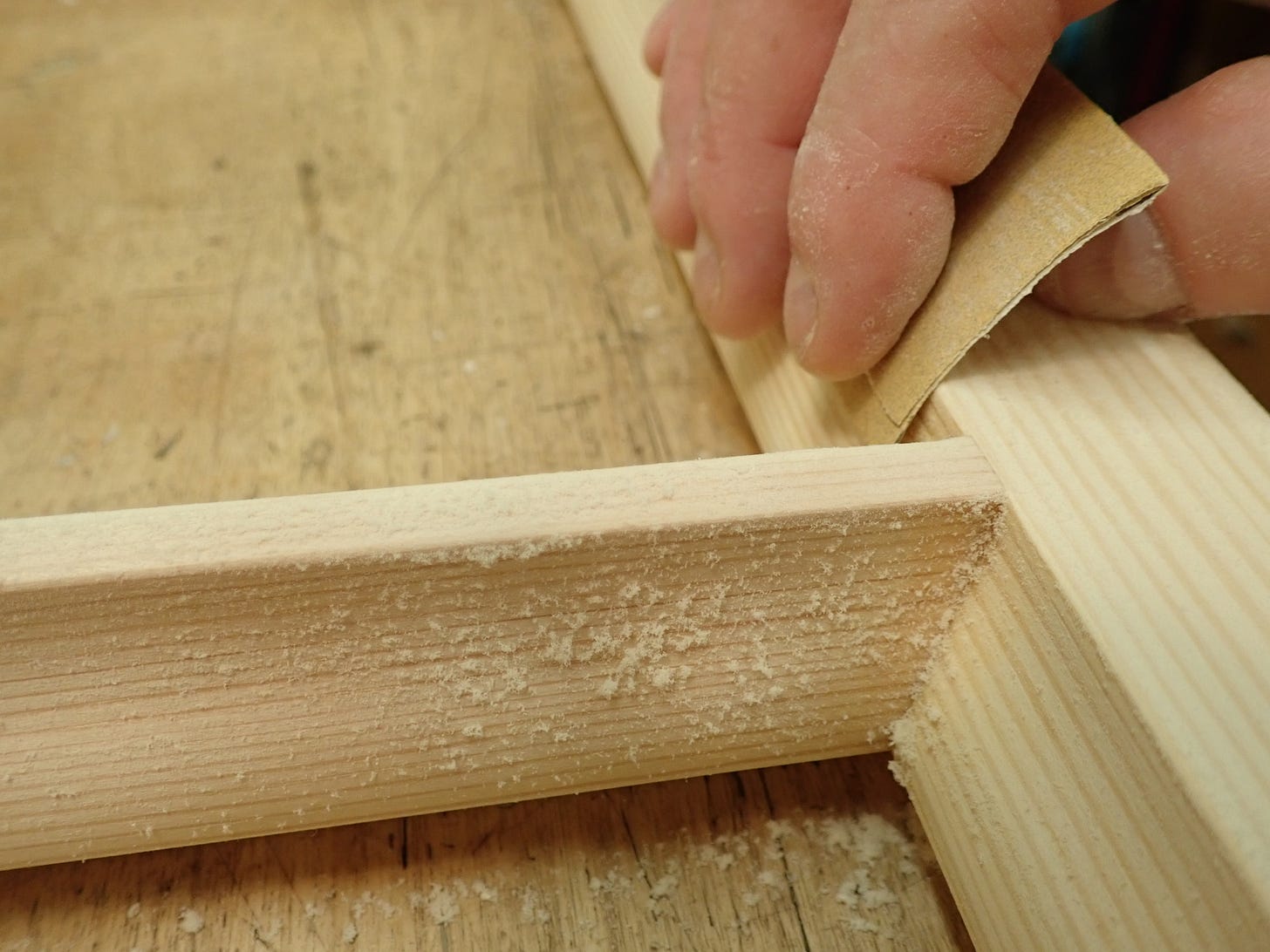
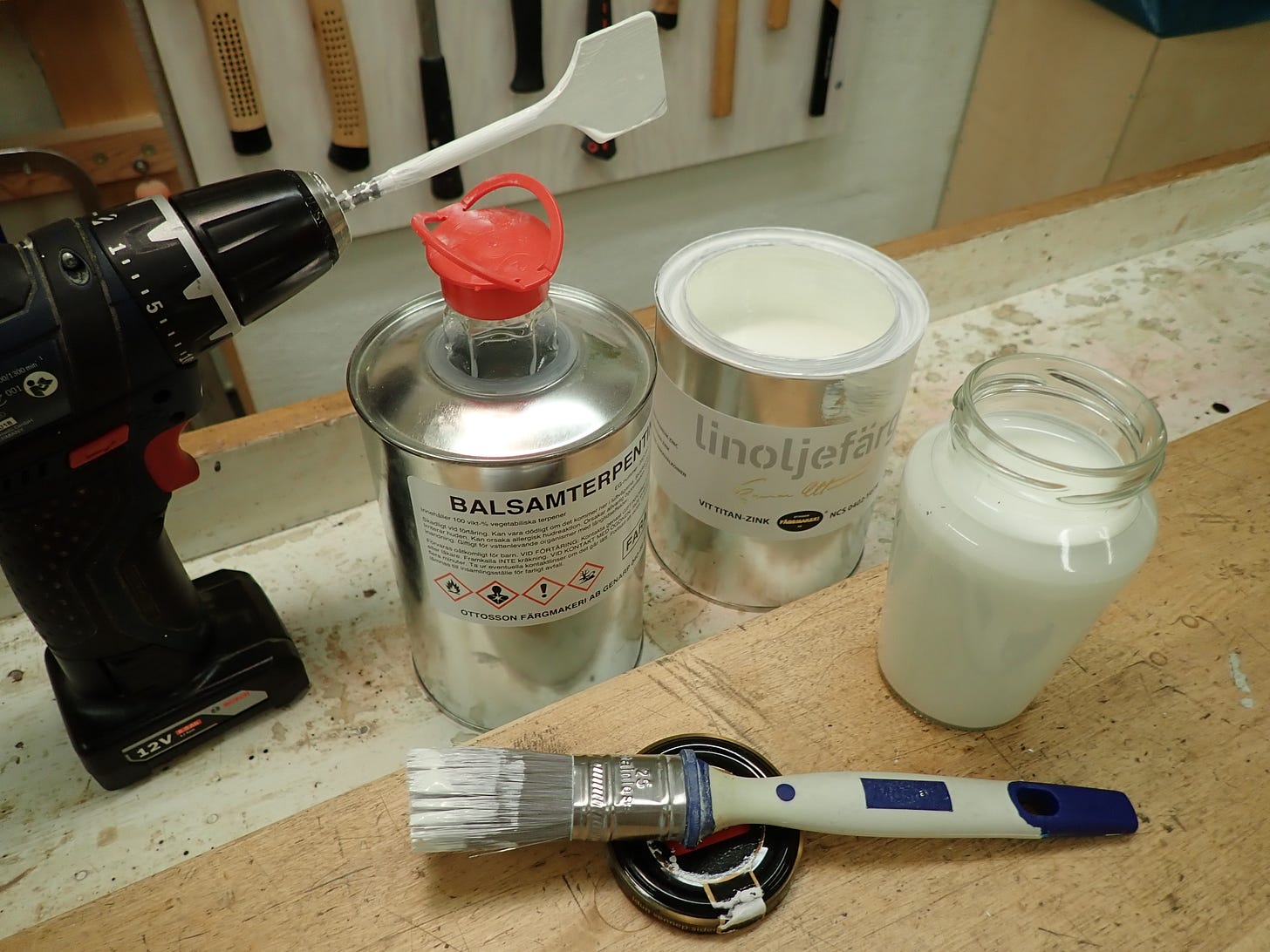
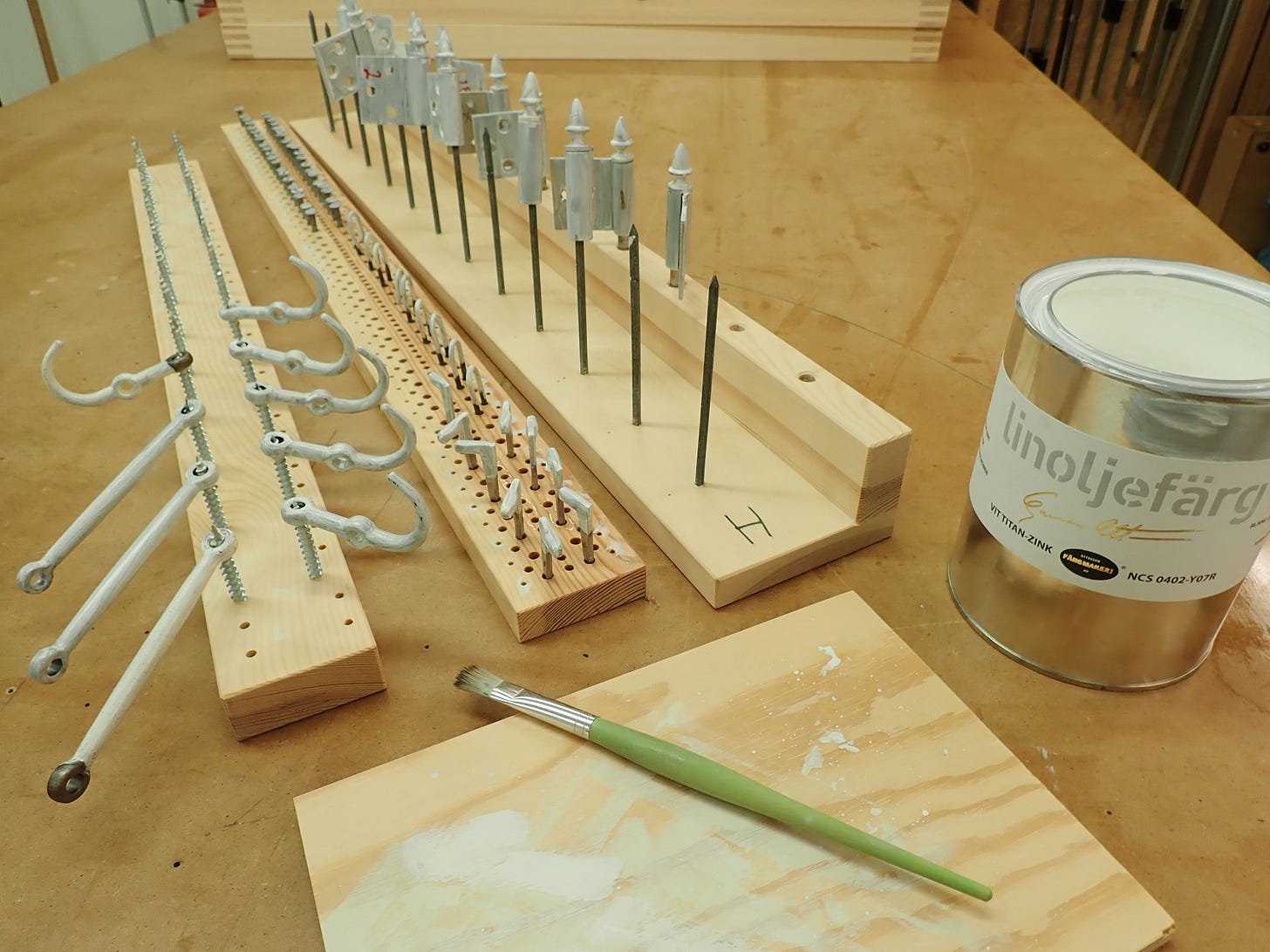

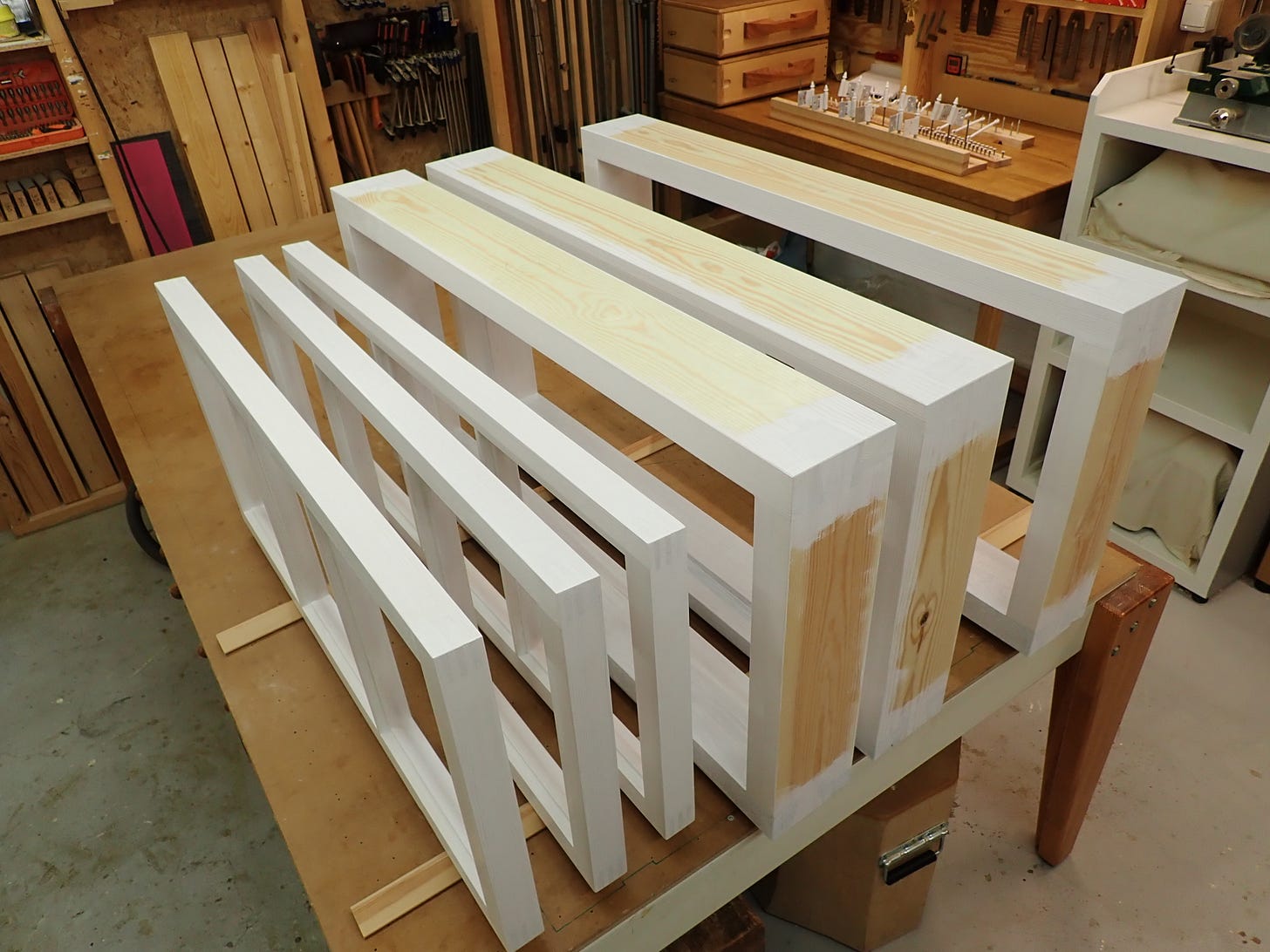
Lots of people use the term "handmade" to infer "well made" because all too often their experience of "machine made" is somehow connected to low grade stuff.
I prefer the term "well made" but even then terms are pointless. Show me the goods and let me decide if what I'm being charged feels worth it. If it is, then I don't give a flying hoot how it was made.
Side story: I was in New York in 2019 and I was staying in Brooklyn. I noticed a really weird trend of "hipster" workshops where two things stood out. One, the craftsman was working in the window like they were the display and two, the price. I called them hipster pods. Shoe makers, cabinet makers, all kinds of niche 'hipsterisms'. They all used handtools. Draw your own conclusions :)
I love the way you are able so simply (and I use that word as a compliment) to paint a Big Picture about the world by reference to and analogy with your specialism. This statement: "Our modern, material world is not built on a laptop in Starbucks, but in factories in Asia, by very clever and crafty people who have the skills and the grit most of us have become too decadent for." is just sublime. I shall, if I may, re-use it.